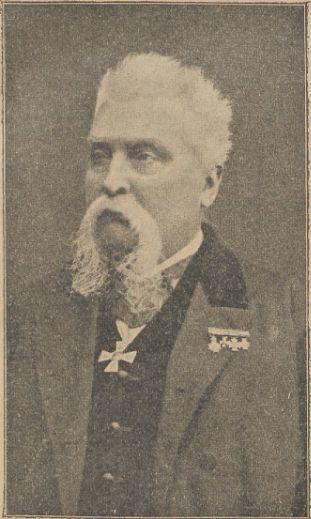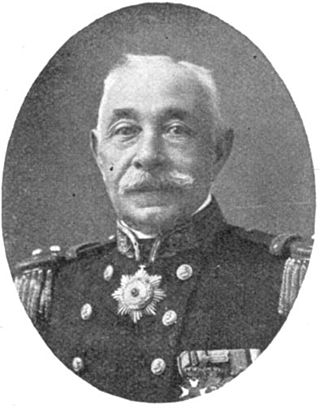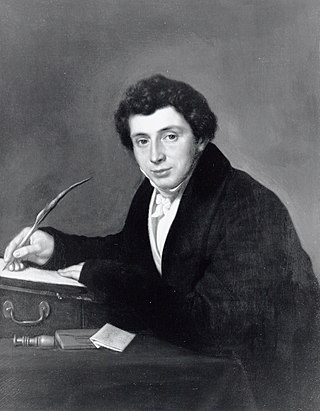- 1 2 3 4 Michel Doortmont. "Derx, Willem George Frederik". GoldCoastDataBase. Retrieved 23 September 2013.(registration required)
- ↑ Baud 1930, pp. 27–28.
- ↑ Yarak 2018, p. 84.
- ↑ Yarak 2018, p. 79.
- ↑ Yarak 2018, pp. 84–85.
- 1 2 Yarak 2018, p. 85.
- ↑ Van Kessel 2005, p. 167.
- ↑ Doortmont, Everts & Vrij 2000, p. 540.
- ↑ Yarak 2018, pp. 85–86.
Related Research Articles

The Dutch Gold Coast or Dutch Guinea, officially Dutch possessions on the Coast of Guinea was a portion of contemporary Ghana that was gradually colonized by the Dutch, beginning in 1612. The Dutch began trading in the area around 1598, joining the Portuguese which had a trading post there since the late 1400s. Eventually, the Dutch Gold Coast became the most important Dutch colony in West Africa after Fort Elmina was captured from the Portuguese in 1637, but fell into disarray after the abolition of the slave trade in the early 19th century. On 6 April 1872, the Dutch Gold Coast was, in accordance with the Anglo-Dutch Treaties of 1870–71, ceded to the United Kingdom.

Cornelis Johannes Marius Nagtglas was a Dutch politician and civil servant, who made a career in the administration on the Dutch Gold Coast. After originally beginning his career at the advanced age of 36, he was promoted through the ranks to eventually become Governor of the Dutch Gold Coast in 1858. He retired to the Netherlands in 1862, but returned to the Gold Coast as governor in 1869, to restore order in the embattled colony. In 1871, he left the Gold Coast again, one year before the transfer of the colony to the United Kingdom.

Carel Hendrik Bartels was the wealthiest and most important Euro-African trader and businessman on the Dutch Gold Coast in the second quarter of the nineteenth century. Apart from his entrepreneurial activities, Bartels was also a judge and member of the colonial government in Elmina, making him one of the most important men in town.
Pieter Woortman was a slave trader and an administrator of the Dutch West India Company. He was one of the longest-serving Director-General of the Dutch Gold Coast, in office between 1767 and 1769 and from 1769 until his death in 1780.
The Dutch–Ahanta War was a conflict between the Netherlands and the Ahanta between 1837 and 1839. Beginning with a mere economic dispute between the Ahanta and the Dutch, who were based at the Dutch Gold Coast, the conflict ended with the hanging of Ahanta king Badu Bonsu II and the reorganization of the Ahanta state, establishing a Dutch protectorate over the Ahanta.

The Dutch Cemetery of Elmina was constructed on the order of Governor of the Dutch Gold Coast Johannes Petrus Hoogenboom in 1806. Up until that date, the Dutch had buried their dead inside or just outside Elmina Castle, but by the beginning of the 19th century, little space was left there, so it was decided to construct a new cemetery in what was known as "the Garden" of Elmina. Ironically, Governor Hoogenboom was also one of the first people to be interred in the cemetery, after he was murdered by local Elminese people with whom he had a disagreement.
George Emil Eminsang was a prominent Euro-African merchant and political leader on the Gold Coast, who played a prominent role in the last years of Dutch colonial rule on the Gold Coast. After the Dutch Gold Coast was transferred to the United Kingdom, Eminsang became a diplomat for the Netherlands and later for the United States and the Congo Free State. Together with James Bannerman Hyde and James Hutton Brew, Eminsang was one of the first so-called "country lawyers" on the Gold Coast.
Anthony van der Eb was a Dutch civil servant, who made a career in the administration on the Dutch Gold Coast.
Petrus Jacobus Runckel was a Dutch colonial government official, who made a career in the administration on the Dutch Gold Coast.

Willem Jan Derx was a vice admiral of the Royal Netherlands Navy.
The Kingdom of the Netherlands has an embassy in the Republic of Ghana. It has a role in promoting trade between the countries.
Pieter Simon Hamel was a Dutch diplomat who served as Consul General at Elmina, Bangkok and Amoy.
Gold Coast Euro-Africans were a historical demographic based in coastal urban settlements in colonial Ghana, that arose from unions between European men and African women from the late 15th century – the decade between 1471 and 1482, until the mid-20th century, circa 1957, when Ghana attained its independence. In this period, different geographic areas of the Gold Coast were politically controlled at various times by the Portuguese, Germans, Swedes, Danes, Dutch and the British. There are also records of merchants of other European nationalities such as the Spaniards, French, Italians and Irish, operating along the coast, in addition to American sailors and traders from New York, Massachusetts and Rhode Island. Euro-Africans were influential in intellectual, technocratic, artisanal, commercial and public life in general, actively participating in multiple fields of scholarly and civic importance. Scholars have referred to this Euro-African population of the Gold Coast as "mulattos", "mulatofoi" and "owulai" among other descriptions. The term, owula conveys contemporary notions of "gentlemanliness, learning and urbanity" or "a salaried big man" in the Ga language. The cross-cultural interactions between Europeans and Africans were mercantile-driven and an avenue to boost social capital for economic and political gain i.e. "wealth and power." The growth and development of Christianity during the colonial period also instituted motifs of modernity vis-à-vis Euro-African identity. This model created a spectrum of practices, ranging from a full celebration of native African customs to a total embrace and acculturation of European culture.
Willem Pieter Antonie Le Jeune, born as Willem Pieter Antonie Tenwinkel, was a Dutch colonial administrator and diplomat, who made a career in the administration on the Dutch Gold Coast and who was interim governor between 28 October 1871 and 15 November 1871. After the Netherlands sold its possessions on the Gold Coast to the United Kingdom in 1872, Le Jeune became the first Dutch consul in Elmina.

Jacobus Cornelis van der Breggen Paauw was a Dutch colonial administrator on the Gold Coast. He was interim commander between 1826 and 1828.
Martinus Swarte was a Dutch colonial administrator on the Gold Coast. He was interim commander in 1833.
Friedrich Franz Ludwich Ulrich Last was a colonial administrator on the Gold Coast.
Jacobus van der Puije was an administrator of the Dutch West India Company. He became President of the council of the Dutch Gold Coast in 1780.
Frans Christiaan Eberhard Oldenburg was a colonial administrator on the Gold Coast, who served as Commander of the Dutch Gold Coast between 2 May 1818 and his death on 2 January 1820.
Hubertus Varlet was a Dutch architect and colonial administrator, who served on the Dutch Gold Coast. In his capacity as master of works and stores, he rebuilt Fort Crèvecoeur in Accra in 1839. Following the promotion of Anthony van der Eb to governor of the Dutch Gold Coast, Varlet succeeded him as the second vice governor for the Ahanta protectorate, which the Dutch had proclaimed following the conclusion of the Dutch–Ahanta War.
References
- Baud, J.C. (1930). "Instructies en Bestuursreglementen nopens het beleid der regeering ter Kuste van Guinee". Bijdragen tot de Taal-, Land- en Volkenkunde van Nederlandsch-Indië. 86 (1): 1–41. doi: 10.1163/22134379-90001465 .
- Doortmont, Michel R.; Everts, Natalie; Vrij, Jean Jacques (2000). "Tussen de Goudkust, Nederland en Suriname. De Euro-Afrikaanse families Van Bakergem, Woortman, Rühle en Huydecoper: IV Rühle". De Nederlandsche Leeuw. 117 (11–12): 490–557.
- Van Kessel, Ineke (2005). Zwarte Hollanders. Afrikaanse soldaten in Nederlands-Indië. Amsterdam: KIT Publishers. hdl:1887/4758. ISBN 90-6832-498-5.
- Yarak, Larry (2018). "'Creative and Expedient Misunderstandings': Elmina–Dutch Relations in the 19th Century". In Osei-Tutu, John Kwadwo (ed.). Forts, Castles and Society in West Africa: Gold Coast and Dahomey, 1450–1960. Leiden: Brill. pp. 72–91. ISBN 978-90-04-38017-2.
Text is available under the CC BY-SA 4.0 license; additional terms may apply.
Images, videos and audio are available under their respective licenses.
Willem George Frederik Derx | |
|---|---|
 | |
| Governor of the Dutch Gold Coast | |
ad interim | |
| In office 6 November 1856 –29 April 1857 |